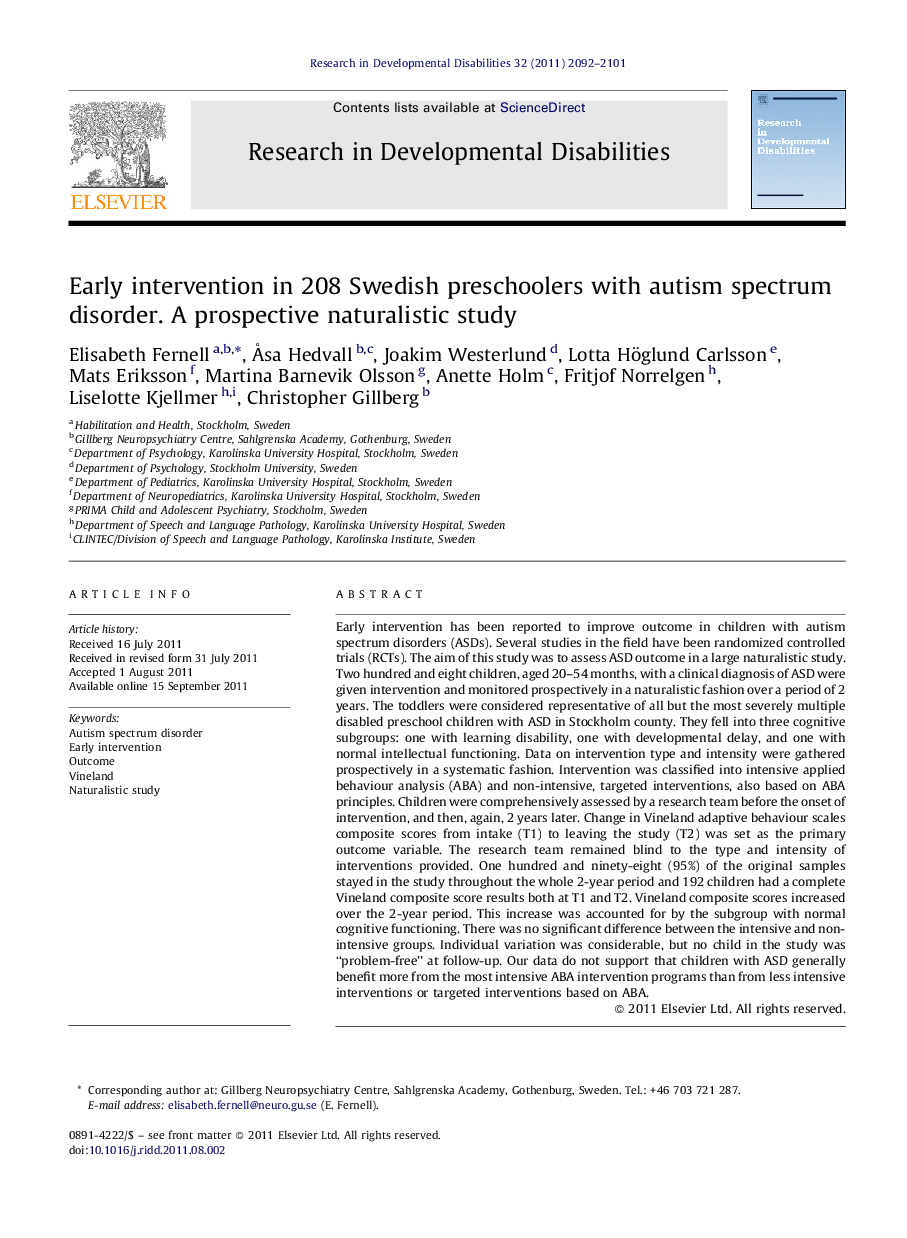| کد مقاله | کد نشریه | سال انتشار | مقاله انگلیسی | نسخه تمام متن |
|---|---|---|---|---|
| 371786 | 621941 | 2011 | 10 صفحه PDF | دانلود رایگان |

Early intervention has been reported to improve outcome in children with autism spectrum disorders (ASDs). Several studies in the field have been randomized controlled trials (RCTs). The aim of this study was to assess ASD outcome in a large naturalistic study. Two hundred and eight children, aged 20–54 months, with a clinical diagnosis of ASD were given intervention and monitored prospectively in a naturalistic fashion over a period of 2 years. The toddlers were considered representative of all but the most severely multiple disabled preschool children with ASD in Stockholm county. They fell into three cognitive subgroups: one with learning disability, one with developmental delay, and one with normal intellectual functioning. Data on intervention type and intensity were gathered prospectively in a systematic fashion. Intervention was classified into intensive applied behaviour analysis (ABA) and non-intensive, targeted interventions, also based on ABA principles. Children were comprehensively assessed by a research team before the onset of intervention, and then, again, 2 years later. Change in Vineland adaptive behaviour scales composite scores from intake (T1) to leaving the study (T2) was set as the primary outcome variable. The research team remained blind to the type and intensity of interventions provided. One hundred and ninety-eight (95%) of the original samples stayed in the study throughout the whole 2-year period and 192 children had a complete Vineland composite score results both at T1 and T2. Vineland composite scores increased over the 2-year period. This increase was accounted for by the subgroup with normal cognitive functioning. There was no significant difference between the intensive and non-intensive groups. Individual variation was considerable, but no child in the study was “problem-free” at follow-up. Our data do not support that children with ASD generally benefit more from the most intensive ABA intervention programs than from less intensive interventions or targeted interventions based on ABA.
► Data from a naturalistic follow-up study of children with autism spectrum disorder was presented.
► Intensive applied behaviour analysis (ABA) and non-intensive ABA intervention were compared.
► Better adaptive functioning outcome was associated with normal cognitive level at diagnosis.
► Intensive ABA-based intervention was not found to be superior to non-intensive ABA interventions.
Journal: Research in Developmental Disabilities - Volume 32, Issue 6, November–December 2011, Pages 2092–2101